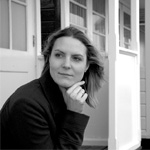Voxpop – Which regions could benefit from community focussed design?
Studio DB recently created a 3D installation as part of the We Love Brixton scheme. Which regions do you know of that could do with some community focussed design?

I can’t think of a local community that doesn’t need some sort of help but I’m thinking closer to home. It’s mostly the smart colleges that ask us to talk to their students, but the ones who need most help are too afraid to call. My girlfriend has just taken up a voluntary position as treasurer at a school for disadvantaged kids in Tower Hamlets, East London, the Ian Mikardo School. Poor kids, tough lives, last chance saloon! I’ll be giving a talk there, maybe it’ll do some good? Anyone else who wants to join me, you’re more than welcome.
James Webb, founder, Webb & Webb Design

It’s understandable and right that these activities tend to focus on areas prone to socio-economic issues. That said, I grew up in affluent commuter-ville St Albans, a place where the fabric of community seems to spread more through the ‘well above average good comprehensive school system’ than any other social mechanism. These types of communities could do with a little invigoration from time to time too if only to stop them being so stiflingly boring.
Nicolas Roope, creative director and founder, Poke

All communities stand to benefit from a new approach like this as an embedded principle. They each have challenges of their own both big and small that remain unresolved and need tackling.
We must not overlook the need to clearly diagnose and co-discover these challenges with the people they affect. A design led approach can do just as much harm as it can good if delivered top down, without community buy in – even if it is the right solution.
Communities need to feel they own solutions before they exist or you risk having lots of white elephants running about. All activity should look to inspire, empower and resource communities. Allowing them to choose accountability not be told that they must take it.
Mike Hewett, lead designer, Sea Communications

Community projects are fantastic ides for bringing art and design in the public eye. In East Anglia, where we are, there are places like Lowestoft where there’s less opportunity than in places like London -bringing community art projects would definitely help put art and design into peoples’ perspective. Lowestoft is an up and coming area that could do with positive investment and attention from the rest of the country, so any sort of projects that show it in a good light and attract people to the area is always a good thing. There are a lot of kids that want to get involved in art and design that can’t go to London – having it on thier doorstep would encourage them to get involved in design projects.
Bex Spillings, senior designer at Spring

I grew up in a little market town in Dorset called Blandford Forum. (Most famous for Badger Beer and Panda Pops.)
Talking to some friends from home lately, they mentioned that there was now a distinct disdain for the town due to closures of local amenities and pubs, and the lack of a place for people to get together.
I think small towns like Blandford would benefit hugely from a project such as the We Love Brixton installation and the impromptu wall of post it notes in Peckham that bring communities back together and give people a reason to fall back in love with where they live.
Chris Waggott, co-founder of Designers Front




WE LOVE BRIXTON was conceived and produced by a collective of residents and small business owners with the support of Lambeth Council. It began with a post riot conversation between a cross section of community representatives; former gang members, church leaders, councillors, residents, business owners and an MP. They felt strongly that the most immediate requirement was to ‘put the love back in’ so that’s exactly what the WE LOVE BRIXTON collective did. What resulted was a direct response to that initial conversation and as such was a genuinely ‘bottom up’ process. We had a clear agenda that the event should not belong to any one group and should be able to be shared by all – it worked. What we did is a powerful new approach that sits somewhere between community development and collective activism, that elicits simple good feelings and an important sense of sharing something/somewhere worth belonging to. We will do more.